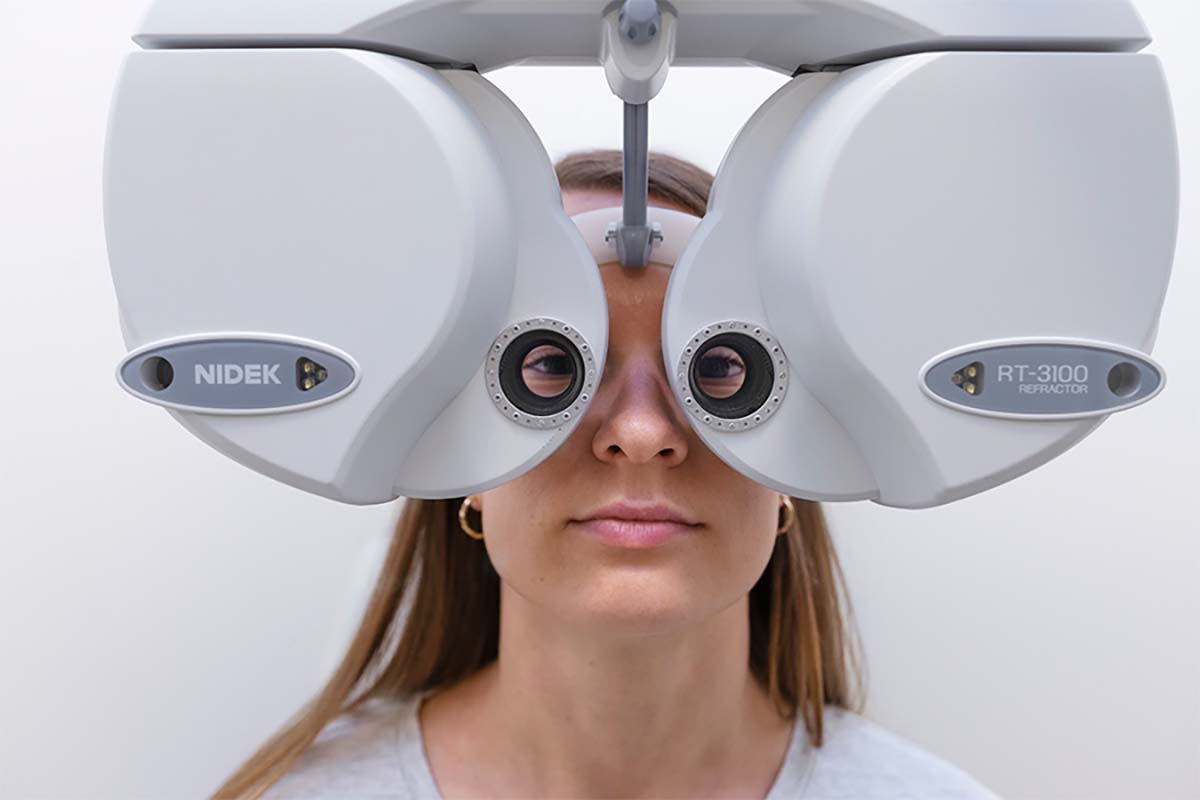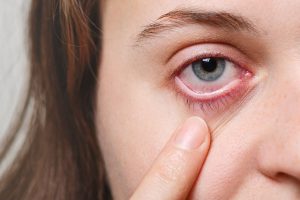Argon laser, operating on the principle of photocoagulation, emerges as a powerful tool in the realm of eye care. This technology harnesses the energy generated by ionized argon gas, transforming it into laser light with a wavelength between 488 nm and 514 nm, often manifesting as blue or green light during application. The coagulating effect of argon laser is particularly effective on colored-pigmented tissues within the eye, offering a non-invasive approach to treat internal ocular conditions.
Versatile Applications in Ocular Health: Diseases Treated by Argon Laser?
Argon laser is a type of laser used in the treatment of eye diseases. Its general purpose is to prevent vision loss by stopping the progression of certain eye diseases. In addition, it is also used to permanently treat some eye diseases. I explained the diseases for which argon laser is used for treatment in the rest of the article;

Unlocking Precision in Glaucoma Management: Trabeculoplasty and Beyond
Narrow-angle glaucoma finds a formidable adversary in argon laser technology. Trabeculoplasty, utilizing this advanced laser, facilitates the expansion of fluid absorption areas, optimizing the flow of aqueous humor and mitigating intraocular pressure. Additionally, argon laser plays a crucial role in glaucoma surgery by delicately cutting stitches, contributing to enhanced surgical precision.
Retinal Tears: Bridging with Laser Scar Tissue
In the realm of retinal tear treatment, controlled small laser pulses wield the power to craft scar tissue, fostering the fusion of tears with adjacent tissues. The objective is clear – to impede the progression of retinal tears into detachment. Vigilant management is paramount, as untreated retinal detachment may necessitate vitrectomy surgery for resolution.
Diabetic Retinopathy: Harnessing the Precision of Argon Laser
For diabetic patients grappling with uncontrolled disease affecting the eyes, argon laser emerges as a key player in preserving vision. The photocoagulation method, executed with precision using argon laser, targets bleeding, leaking microaneurysms, and abnormal blood vessel formation in the macula. The goal is to halt disease progression, preventing complications such as intraocular bleeding and retinal detachment.
Navigating Retinal Vein Occlusion: Argon Laser Photocoagulation
Patients grappling with retinal vein occlusion encounter parallels with diabetic retinopathy, including the emergence of abnormal blood vessels. Argon laser photocoagulation therapy steps in as a strategic intervention, akin to its role in diabetic retinopathy, mitigating the risk of bleeding and tractional retinal detachment associated with these vessels.
Central Serous Retinopathy: Precision in Fluid Management
Central serous retinopathy (CSR), often linked to stress-related fluid accumulation beneath the retina, encounters tailored solutions with argon laser. In cases where fluid leaks are distant from the visual center, classical or subthreshold argon laser photocoagulation becomes a valuable approach.
As we journey through the nuanced landscape of laser treatments, these advancements stand testament to the precision, versatility, and efficacy of argon laser technology in safeguarding and restoring ocular health.
Argon Laser Treatment Unveiled: A Seamless Ocular Symphony
Delving into the realm of ocular precision, Argon laser treatment, masterfully orchestrated by seasoned ophthalmologists, takes center stage within the welcoming confines of an outpatient clinic. Liberation from hospital stays characterizes this patient-centric experience, enabling individuals to resume their routine immediately post-treatment, with no imperative for eye closure.
Argon Laser Treatment Unveiled: A Seamless Ocular Symphony
Delving into the realm of ocular precision, Argon laser treatment, masterfully orchestrated by seasoned ophthalmologists, takes center stage within the welcoming confines of an outpatient clinic. Liberation from hospital stays characterizes this patient-centric experience, enabling individuals to resume their routine immediately post-treatment, with no imperative for eye closure.
Navigating the Argon Laser Treatment
Embarking on the stage of Argon laser photocoagulation, this therapeutic treatment unfolds in a 5-10 minute crescendo, sculpted with precision based on the treatment area’s dimensions. The overture commences with the application of pupil-dilating drops, a prelude to optimal performance. Thirty minutes later, as pupils gracefully expand, the application of numbing drops ensues, casting a pain-free spell over the ocular canvas.
A bespoke lens, meticulously crafted for Argon laser applications, gracefully takes its position. Beyond providing crystalline imaging of the retina, this ocular virtuoso restrains inadvertent eye movements. Amidst the Argon laser’s delicate pirouettes, patients may acknowledge a subtle sensation, akin to a fleeting fly bite, marking the symphony of treatment with an ephemeral note.
Post-Treatment Symphony: Nurturing Your Ocular Canvas
The postlude following argon laser photocoagulation treatment orchestrates a unique melody, finely tuned to the specific ailment addressed. Adherence to your doctor’s post-treatment directives is paramount, ensuring a harmonious recovery. Amidst the curiosity that often accompanies post-treatment contemplation, rest assured—water’s tender touch, invigorating showers, and the caress of steam pose no harm to your revitalized eyes. Navigate the post-treatment with your doctor’s compass in hand, ensuring a smooth sail toward ocular wellness.
Navigating the Aftermath: A Glimpse into Post-Argon Laser
Embarking on the post-argon laser treatment, expect a transient interlude of blurred and rosy-hued vision for roughly 30 minutes—a normal crescendo in the stage of recovery. The blurred near vision gracefully waltzes on until the lingering effects of the pupil-dilating drops dissipate. If the visual serenade fails to return to its baseline within 24 hours, your best course of action is to go for a consultation with your expert, the esteemed eye specialist.
Understanding the Safeguards: Exploring Potential Risks of Argon Laser Treatment
Skilled Hands, Low Hazards
Under the expertise of seasoned ophthalmologists, undergoing argon laser photocoagulation entails minimal risks. Potential burns may arise if the patient inadvertently moves their eyes during the procedure, causing the laser to reach unintended areas. In cases where the treatment is administered in inappropriate doses or frequencies, a temporary visual edema might manifest, typically resolving with time or prescribed drops. For diabetic patients, a more tailored intervention, such as an intraocular injection, may be necessary. Disregarding post-treatment guidelines may lead to infection around the eyes and eyelids.
Guidelines for a Safe Recovery
To navigate the aftermath of argon laser treatment safely, it’s advisable to avoid dusty environments for 2-3 days, steer clear of eye makeup, refrain from steamy environments like Turkish baths and saunas, skip aquatic activities in pools or the sea, and resist the urge to rub the eyes for the initial 24 hours. Adhering to these precautions can help ensure a smooth recovery.
Exploring Argon Laser: FAQs
Argon Laser During Pregnancy?
Argon laser application to the retina is considered safe during pregnancy, posing no harm to expectant mothers.
Blurry Vision Post-Argon Laser?
Blurred vision immediately after argon laser is typical due to the intense light exposure. Pupil dilation from drops may also cause near vision blurriness for up to 6 hours (or 24 hours with specific drops). If unusual blurriness persists, consulting the treating doctor is advisable.
Flashes of Light Post-Argon Laser?
When argon laser is conducted for retinal tears preceded by flashes of light, post-procedure flashes may persist. While the laser prevents tear progression, it doesn’t eliminate pre-existing light flashes.
Frequency of Argon Laser Sessions?
Completing a 360-degree laser coverage around the retina typically requires 3-5 sessions, often used in treating diabetes-related retinal hemorrhages. For other conditions, the number of sessions varies based on the treated area’s size. In central serous chorioretinopathy (CSR), subthreshold argon laser can be repeated every 3-4 months.
Post-Argon Laser Lens Use?
Patients can safely use contact lenses post-argon laser once their vision clears. Wearing contact lenses on the same day as the procedure, after vision improvement, poses no harm.









